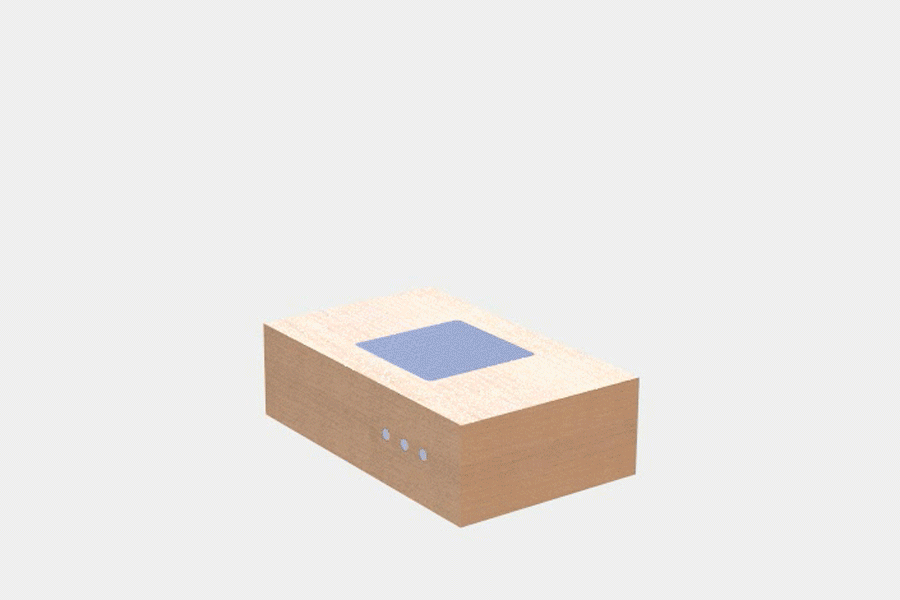
Named ‘Koko’, a Japanese word meaning ‘here’, this internal research and development project conducted at Tomorrow Lab by Adrian Pearl and Darrien Tu aimed to explore how can we use honesty of materials and multiple senses to make long distance communication a little more tactile.
The two engineer-designers looked at creating a device that allows for tangible, yet subtle ways to notify a long distance partner of their presence using light, heat, and vibration. The product is split into two devices: an output display and an input controller. They are connected to each other through the cloud using onboard WiFi modules.
Adrian Pearl
Product Design
Firmware Development
Prototyping
The display and controller devices are designed to measure and display presence at three levels, corresponding to a scale built of increasing proximity (between far and near):
- 1. Light shines on the display when the controller senses someone in the room
- 2. Heat is be delivered on the display when the controller is touched with a fingertip
- 3. Vibration is occurs on the display when the controller is held and squeezed
The devices are designed for one way communication: one partner can communicate their presence to the other partner by using the controller. In future iterations, we imagine bi-directional communication.
In order to arrive at the most appropriate design, we tested several materials which would lend themselves to the physical display properties of light, heat, or vibration. On the display device, frosted acrylic allowed for a soft diffused light, aluminum offered a great heat conductor, and maple wood served as a solid vibration chamber. On the controller device, we repeated the wood material but also included conductive fabric as the touch-sensitive tactile pad. An embedded sound sensor in the controller measures the presence of someone in the room.
We used 3D prints to test various forms for each display object to determine the best size, weight and feel. In the end, we selected the clean lines of rectangular prisms the best direction. Each display has a different sizes in order to give a physical hierarchy to the experience of each material and sense.
We wrote firmware for both devices to accurately measure and display the increasing proximity and presence of the partner on the other end. In this case we used Particle Photons to connect both devices to the cloud.
We sourced the right pogo pins to offer reliable connectivity between the display modules and the base plate. The same pogo pins were used on the controller device and its charging cradle.















